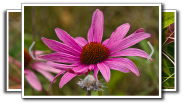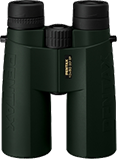fungus
(Pallidohirschioporus subchartaceus)
Conservation • Description • Habitat • Ecology • Distribution • Taxonomy
|
|
||||||||||||||
Description |
Pallidohirschioporus subchartaceus is a common bracket fungus. It occurs in the United States from the East Coast to the Rocky Mountains but it is absent from the Great Plains and it is mostly absent from the Deep South. In Canada it occurs in the south from Nova Scotia to British Columbia and north in the west to Alaska. It also occurs in Mexico. It is found in deciduous and mixed forests and woodlands. It grows on dead wood of poplar and aspen (Populus spp.). It appears alone or in overlapping clusters, sometimes forming a large mass that almost completely covers a dead standing trunk. It obtains its nutrients from dead wood (saprobic). The fruiting body is a ⅜″ to 3″ (1 to 8 cm) wide, ⅜″ to 2″ (1 to 5 cm) deep, 1⁄64″to ⅝″ (0.4 to 15 mm) thick, shelf-like or bracket-like cap. It is semicircular to shell-shaped, and it is sessile (attached to the substrate without a stalk). It is tough but flexible when fresh. It becomes hard and rigid when it is dry, but it recovers when moisture is added, as by rain. It is gray or ashy gray, and it is indistinctly multiply-zoned with pale, subtle, grayish or pinkish tints. It becomes tinged yellowish on drying. The upper surface has a velvety texture due to a dense covering of fine, soft hairs. It can feel slightly rough due to a mixture of these soft hairs with stiffer, bristly ones. The margins are cream-colored, often pale yellowish white, with a thin, felty edge. The pore surface on the underside of the cap is typically purplish blue to violet, sometimes reddish brown, sometimes darker brown with grayish or pinkish tones, and occasionally paler. The pores are 1⁄32″ to ⅛″ (1 to 3 mm) deep and there are 2 to 3 pores per 1⁄32″ (1 mm). The pore mouths are thick walled, smooth, and unbroken at first, becoming torn or jagged but never tooth-like or comb-like in appearance. The flesh is white, 1⁄16″ to ⅛″ (2 to 4 mm) thick, and slightly two-layered. The lower two-thirds are thick and firm, and the upper third is softer due to the woolly, densely hairy covering. Edibility is unknown. |
Similar Species |
Habitat and Hosts |
Deciduous and mixed forests and woodlands. Poplar and aspen (Populus spp,). |
Ecology |
Season |
Year round |
Distribution |
||
|
Sources |
|
| 5/11/2025 | ||
Occurrence |
||
Common |
||
Taxonomy |
|
Kingdom |
Fungi (Fungi) |
Subkingdom |
Dikarya |
Phylum |
Basidiomycota (Basidiomycete Fungi) |
Subphylum |
Agaricomycotina (Higher Basidiomycetes) |
Class |
Agaricomycetes (Mushrooms, Bracket Fungi, Puffballs, and Allies) |
No Rank |
Agaricomycetes incertae sedis (no subclass) |
Order |
Hymenochaetales |
Family |
Hirschioporaceae |
Genus |
Pallidohirschioporus |
This species was first described as Polyporus subchartaceus by Elias Magnus Fries in 1833. It was placed in the family Polyporaceae in the order Polyporales. It was later determined that the genus Polyporus contained species that were derived from more than one common ancestor (polyphyletic), and it was therefore invalid. In 1972 Miles Joseph Berkeley transferred it into the genus Trichaptum in the order Hymenochaetales, and it became Trichaptum subchartaceum. Trichaptum and several other genera in the Hymenochaetales were incertae sedis (“uncertain placement”), and they were not placed in a family. Eventually, the genus Trichaptum was also determined to be polyphyletic. A very recent morphological and molecular study (Zhou M et al., 2023) proposed a revised systematics of Trichaptum s. l.. Two new families and five new genera were proposed. Ten species were transferred into the new genus Pallidohirschioporus and the new family Hirschioporaceae. The proposed move has not been widely accepted – yet. This is probably in large part to the newness of the study, which was published in August 2023. Index Fungorum, MycoBank, and NCB have adopted the new systematics. |
|
Subordinate Taxa |
|
|
|
Synonyms |
|
Coriolus subchartaceus Heteroporus subchartaceus Hirschioporus subchartaceus Polyporus subchartaceus Polystictus subchartaceus Trichaptum subchartaceum |
|
Common Names |
|
This species has no common name. |
|
Glossary
Saprobic
A term often used for saprotrophic fungi. Referring to fungi that obtain their nutrients from decayed organic matter.
Visitor Photos |
||
Share your photo of this fungus. |
||
This button not working for you? |
||
Luciearl |
||
 |
||
MinnesotaSeasons.com Photos |
||
|
||
|
||

Slideshows |
|

Visitor Videos |
||
Share your video of this fungus. |
||
This button not working for you? |
||
|
Other Videos |
||
|

|
Created: 5/11/2025 Last Updated: © MinnesotaSeasons.com. All rights reserved. |



